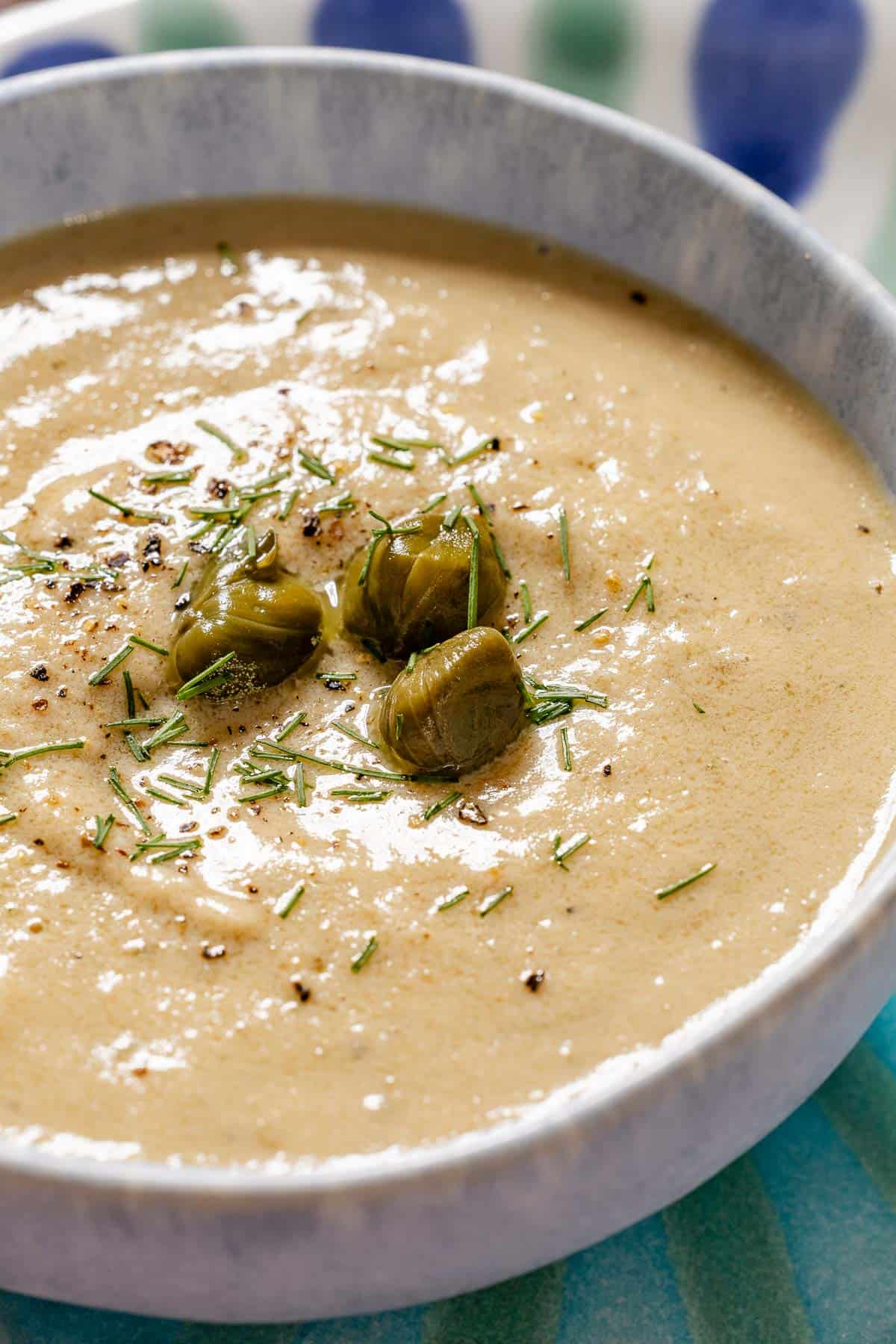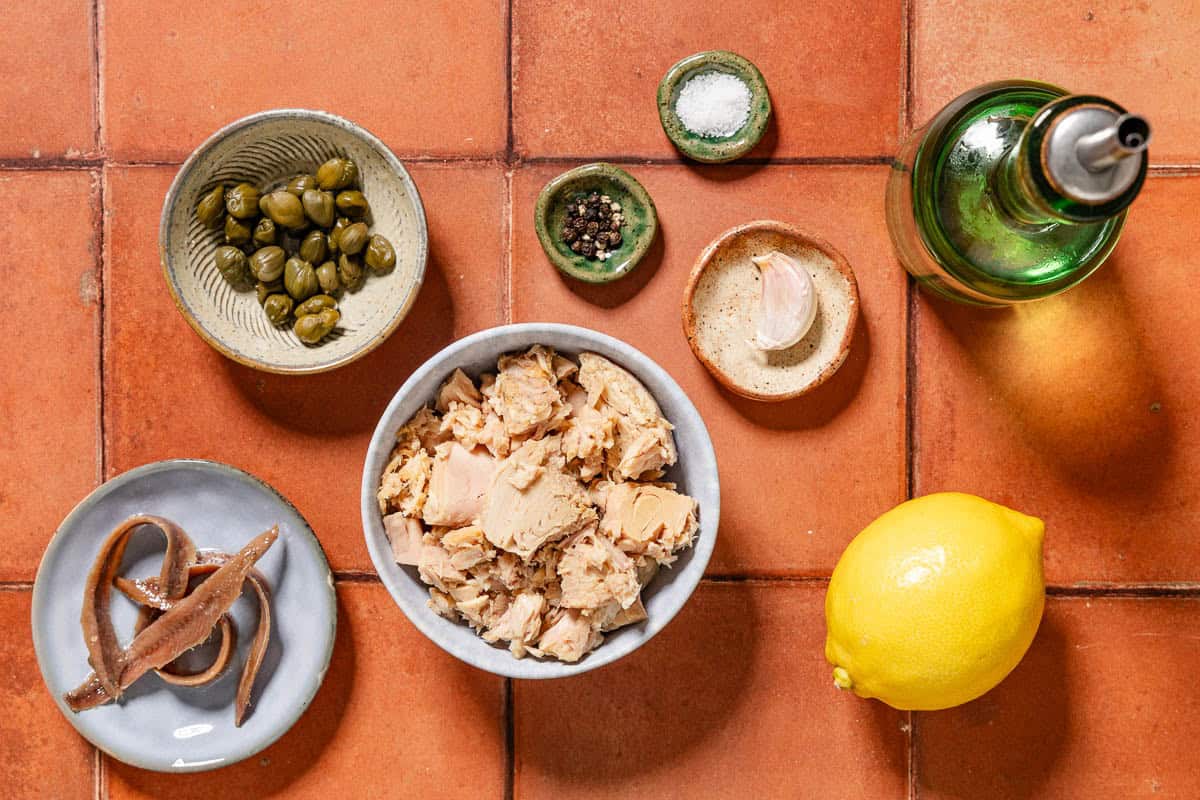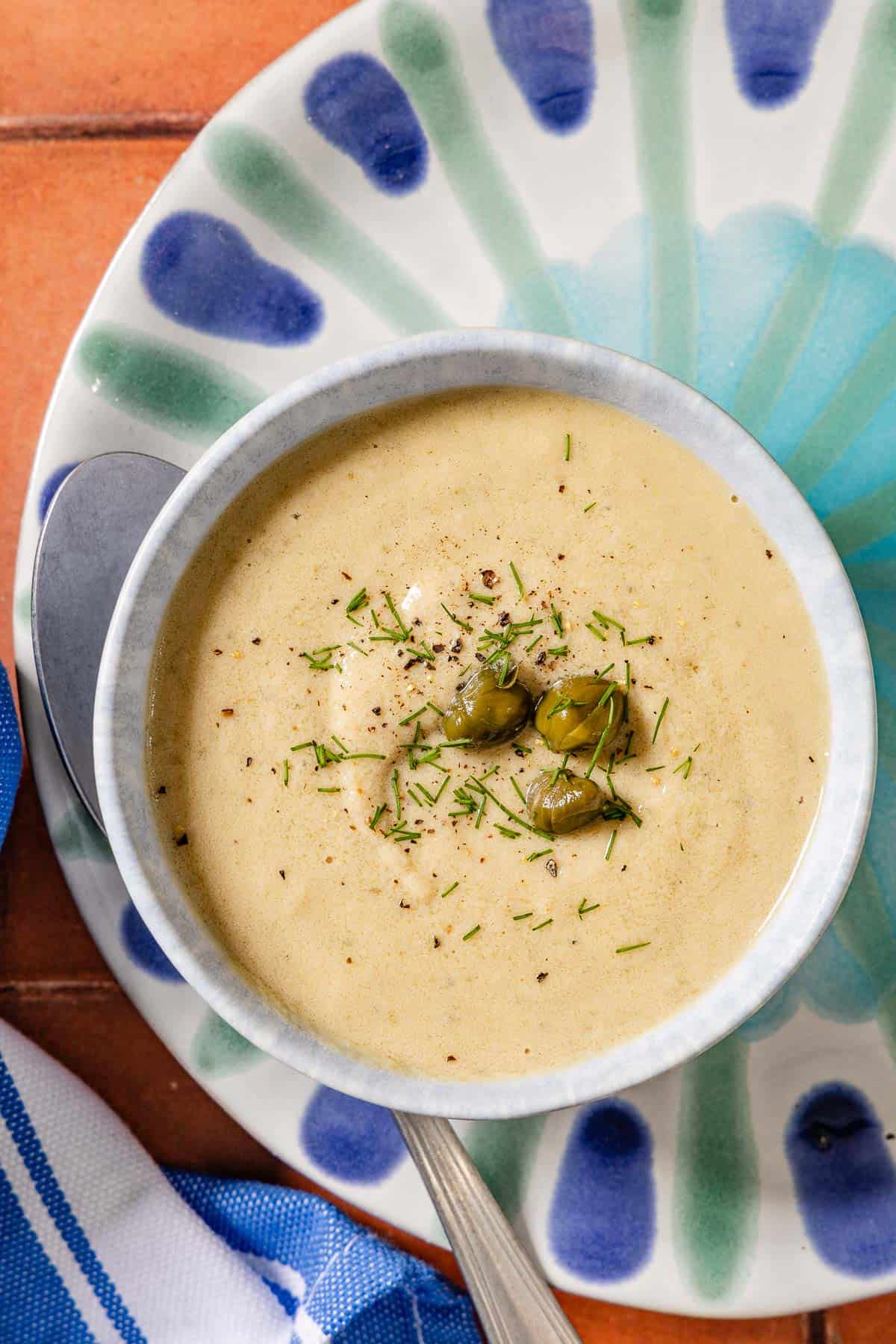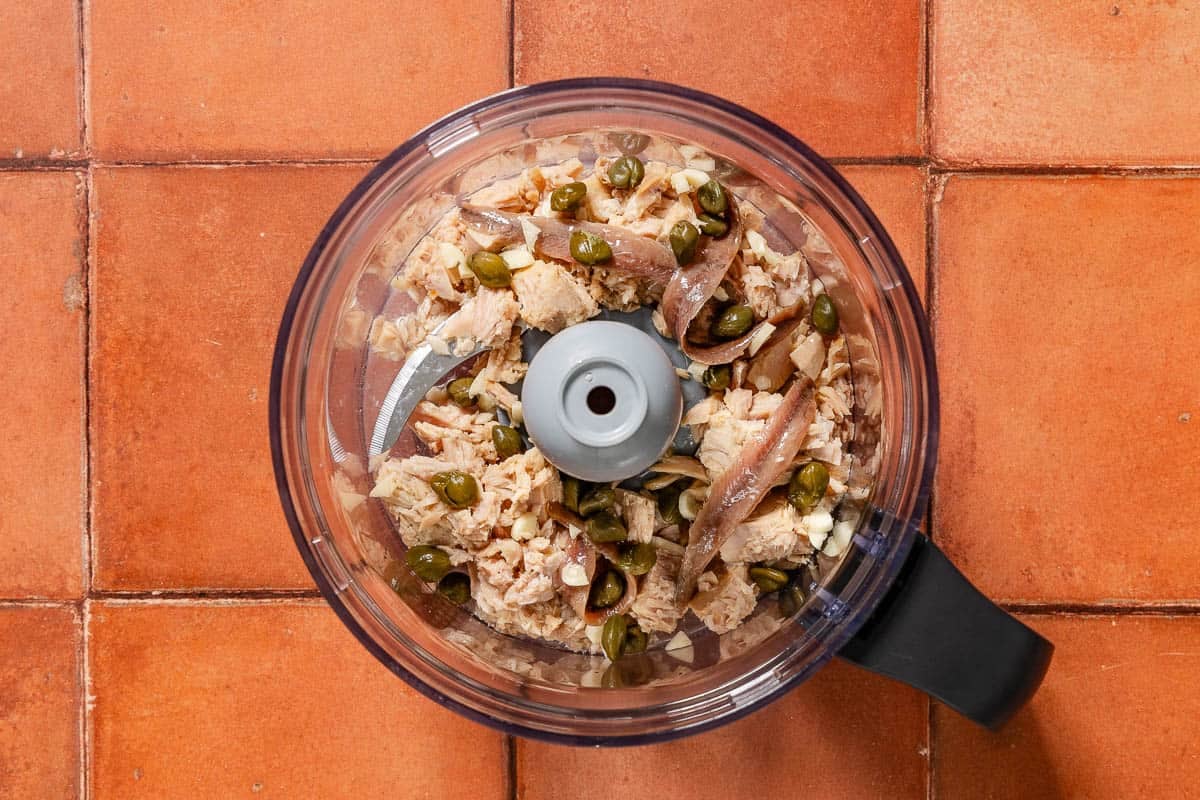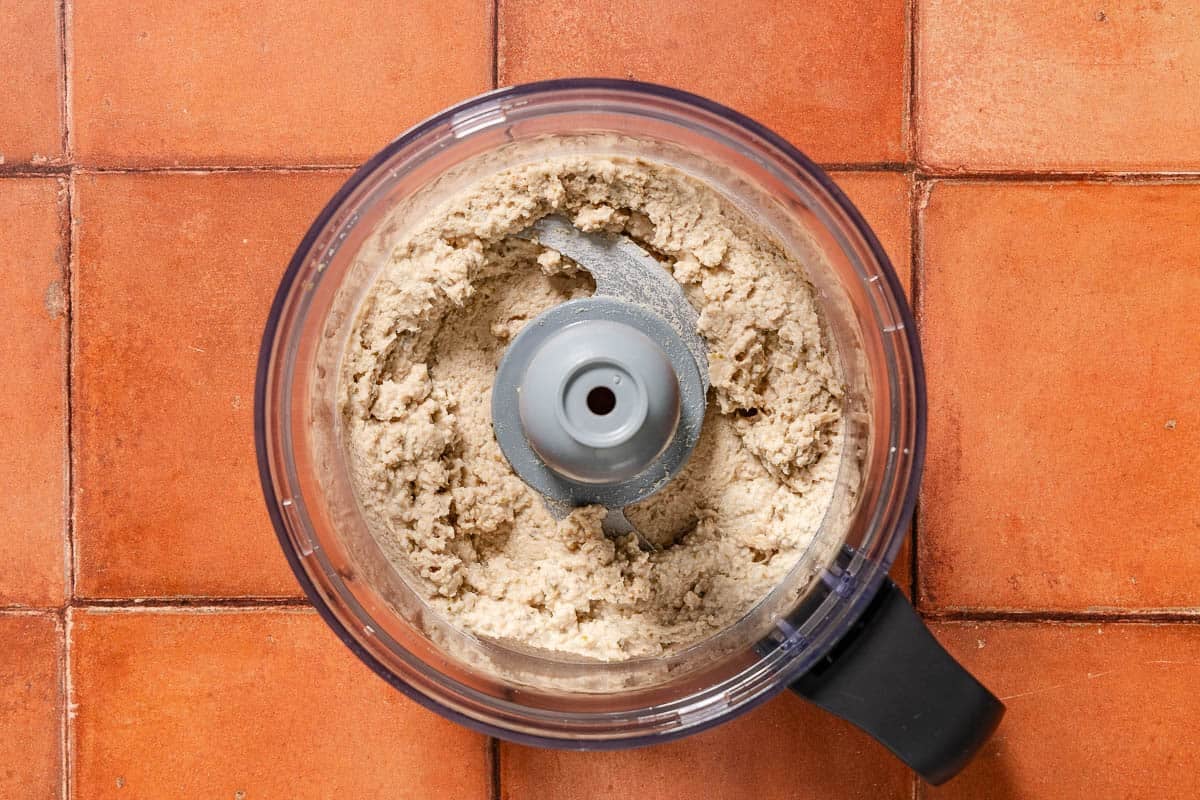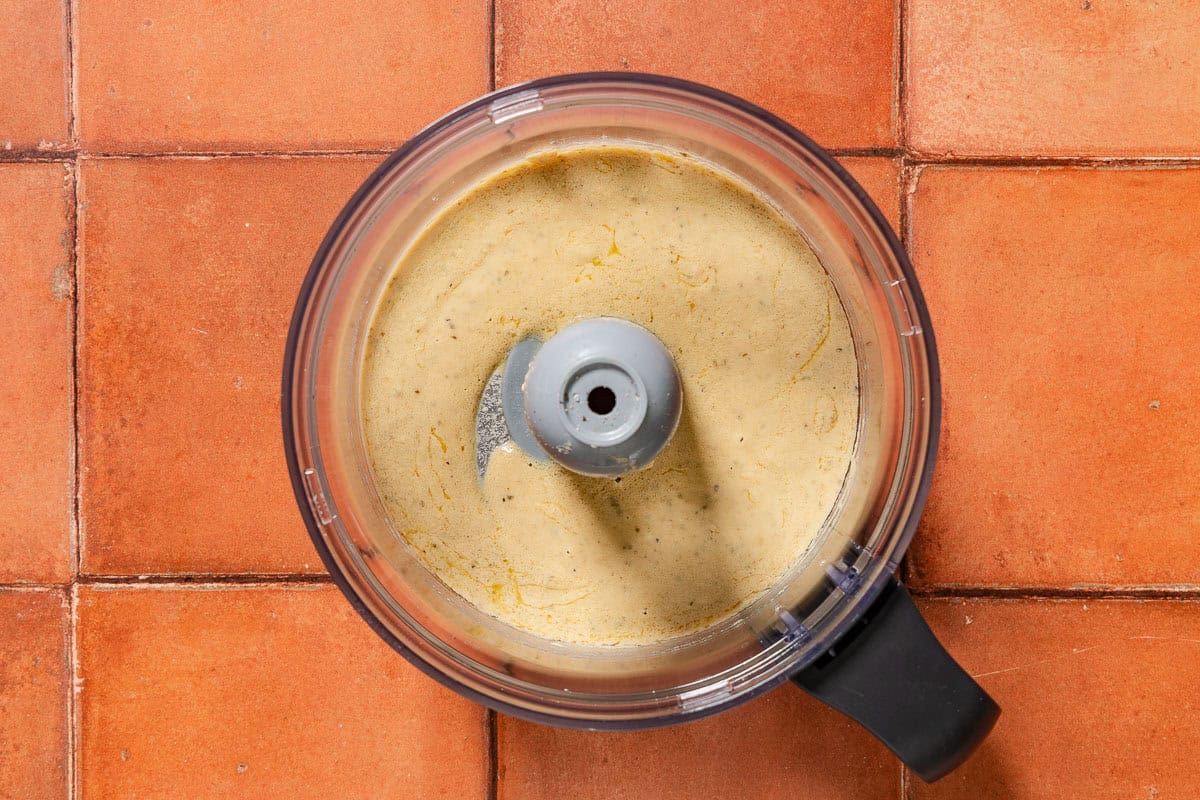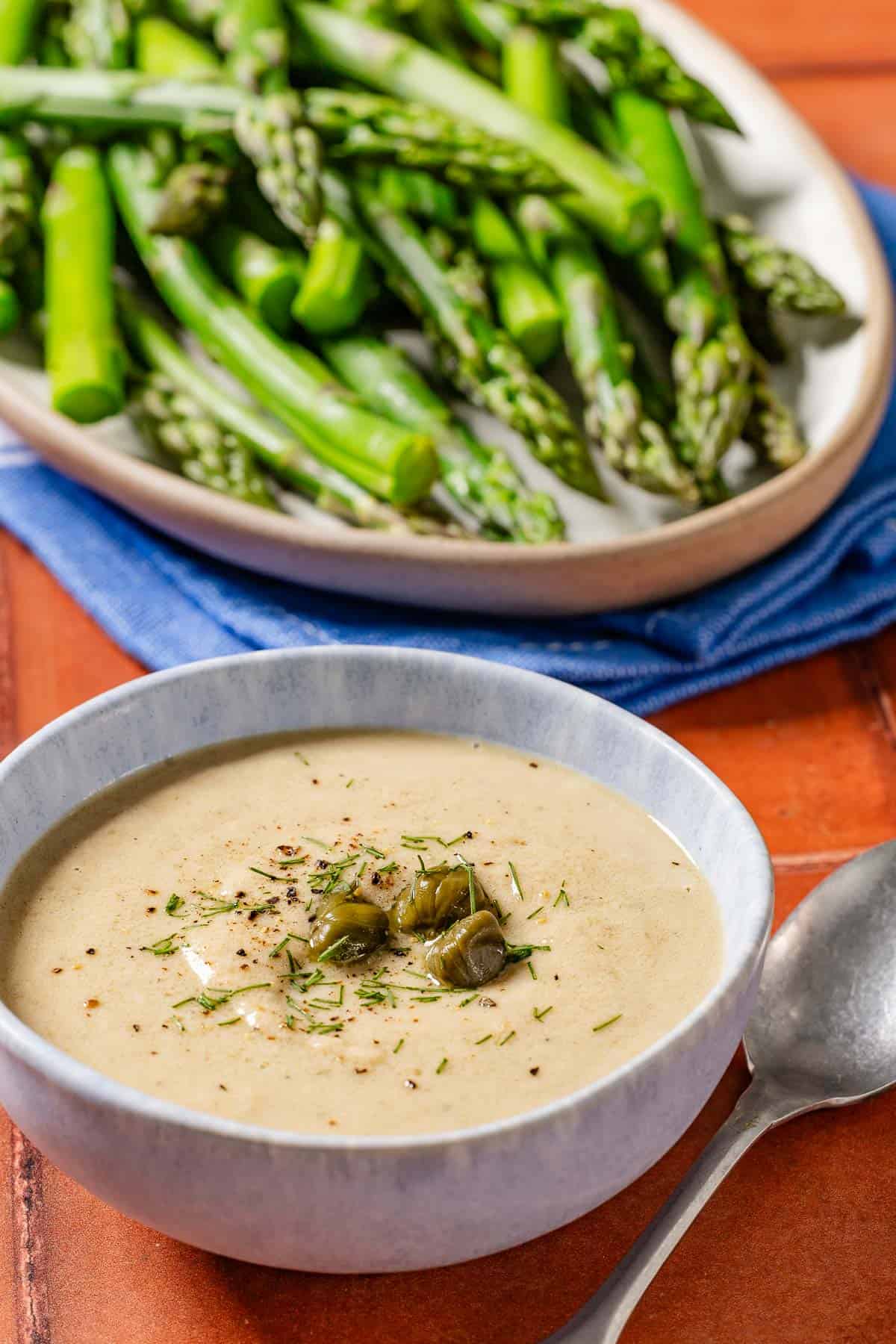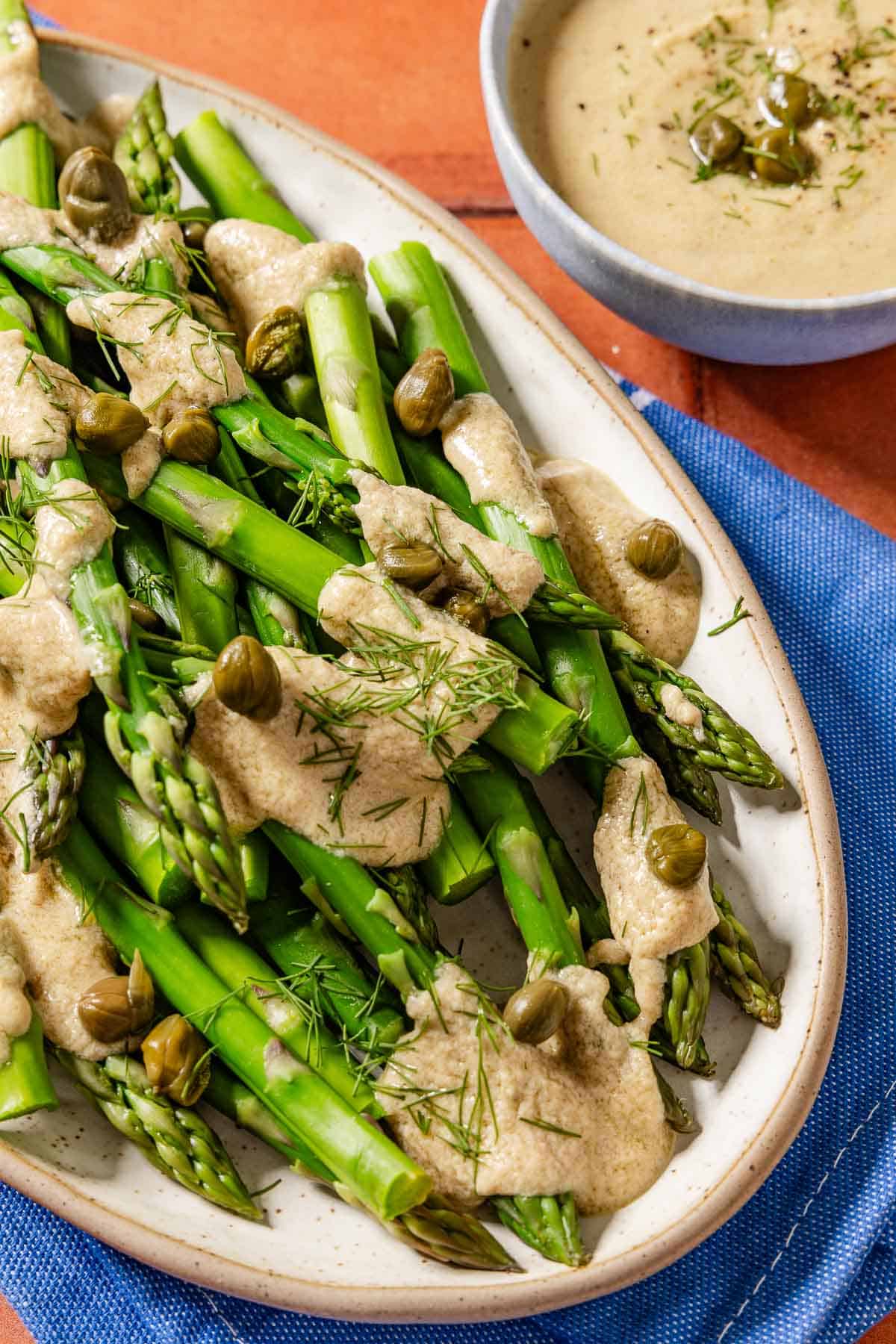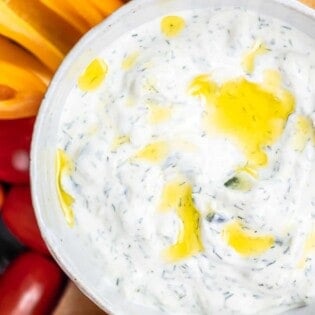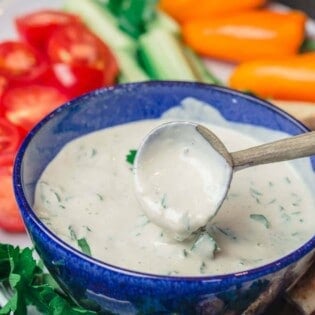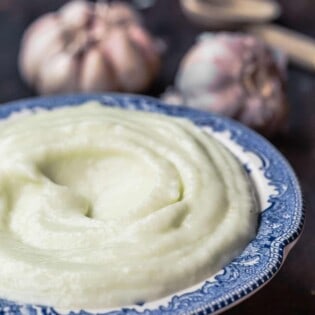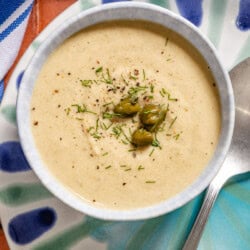I first tried Vitello Tonnato, a traditional Italian dish of thinly sliced roast veal topped with tuna sauce, while visiting a friend in the mountains outside of Turin. We stopped at a chalet for lunch on our drive up the mountains, sat in a cozy booth by the window, and ordered a spread of local specialties to share. The first round was an Antipasto Platter with cheeses, salami, and Vitello Tonnato. The tonnato sauce was beautifully tangy and creamy—I wanted to save it to cover everything else on the table. I don’t often make veal at home, but since that beautiful lunch, I absolutely love to use tonnato sauce on other dishes. With a consistency similar to Aioli and a sharp, unctuous flavor, I use it to dress up sliced tomatoes, baked potatoes, steamed or oven-roasted vegetables, salads, and beyond. In the traditional recipe, egg yolks and olive oil are first beaten together to make a mayonnaise. The tuna is added and pureed to make a smooth, creamy sauce. The sauce is sometimes thinned with water or cooking liquid from the veal. In my version, I use extra tuna and olive oil for an equally decadent sauce, while skipping adding mayo or emulsifying raw egg yolks. I vary how much olive oil I add depending on how I’d like to serve it: more for a spoonable sauce and less to make a dip for bread and crunchy raw veggies. Don’t get me wrong, Vitello Tonnato is a dish I’d love to repeat (and have). But honestly, the sauce is what makes the dish, and it’s surprisingly easy to make.
Ingredients for Tonnato Sauce
Most of the ingredients for tonnato sauce are pantry staples, which makes tonnato sauce a recipe I lean on on days too hot to cook or want a quick way to upgrade leftovers. The better quality tuna you use, the better the sauce will be.
Tuna: I like to use high-quality canned yellowfin or albacore tuna packed in olive oil. Anchovies: Canned or jarred salt-cured anchovies packed in olive oil are salty and intensely savory. Capers: Brined capers are tangy and salty. They’re a wonderful pairing with tuna and lemon. Garlic: The raw garlic packs a powerful but delicious punch. I like to add one small clove of garlic, though you can skip it or add more. Lemon juice: Bright lemon flavor and acidity lighten the sauce. Kosher salt: Between the anchovies and capers, there are already some salty ingredients in the sauce. For my taste, the sweet spot is 1/4 teaspoon of kosher salt, though adjust it to your preference. Extra virgin olive oil: Add 1/4 cup of olive oil for a thicker, dip-like consistency, or 1/2 cup for a thinner, sauce-like consistency. A smooth and buttery variety, like our Italian Nocellara, is best with this tonnato recipe. Freshly ground black pepper: Adds a peppery kick that works well with the tangy and rich flavors.
How to Make Tonnato Sauce
It couldn’t be simpler or faster to make tonnato sauce. Just blend everything except for the olive oil in a food processor, then slowly incorporate the olive oil. Sometimes, to make the sauce extra smooth I finish it with my immersion blender.
Combine the ingredients: Drain and flake a 7-ounce can of tuna and add to the bowl of a food processor fitted with an S-blade. Add 4 anchovies, 1 tablespoons capers, 1 chopped garlic clove, and 3 tablespoons lemon juice. Make a paste: Close the lid and blend on low speed until the mixture has been ground into a paste, 1 to 2 minutes. Pause and scrape the bottom and sides as needed. Add the olive oil: With the food processor running, pour in the olive oil in a slow, steady drizzle through the top opening until you have a rich sauce to your preferred consistency. I add 1/4 to 1/2 cup–more for a spoonable sauce and less to make a dip for bread and crunchy raw veggies. Continue blending until smooth, 1 to 2 minutes. Add salt and freshly ground black pepper to taste. Serve: Serve as a sauce or a dip on roasted meat, steamed or roasted veggies, crudités, or bread.
Ways to Mix it Up
Depending on what I plan to use tonnato sauce for, I might mix some add-ins for even more flavor. Some ideas:
Add mustard: A small dollop of Dijon adds even more tang and a pleasant, pungent kick. I usually add about a teaspoon to one batch of tonnato sauce. Add fresh herbs: I love throwing in basil when I want to use the sauce with tomatoes, or dill when using it with roasted vegetables. I’m not too specific with the amount, usually a small handful (2 to 4 tablespoons) of fresh tender green herbs, like parsley, basil, or dill.
What to Serve with Tonnato Sauce
Once you try tonnato, you’ll be flooded with ideas for how to use it. You’ll want to put it on everything. You can make the traditional Vitello Tonnato by spooning the sauce over cold, thin slices of roasted veal. But it works nicely with other meats as well, like pork or chicken. The simplest way to enjoy this rich and briney sauce is as a dip for raw veggies, or slathered on bread. Use on a dip for freshly baked Focaccia and you’ll be amazed you ever lived without it! I especially like to serve it over steamed or roasted vegetables–these Italian Roasted Veggies are a great pairing. I recently dressed Blanched Asparagus generously with tonnato sauce and garnished with capers and fresh dill. Crispy Smashed Potatoes are another great match. You can also use tonnato as a salad dressing, almost like a tuna Caesar Salad. It’d be delicious on this Italian Potato Salad. Or, for a no-cook summer meal, make a tomato salad by smothering thickly-sliced tomatoes with tonnato sauce and garnishing with fresh herbs, capers, and/or Pickled Red Onion.
Easy Tzatziki Sauce Recipe
Tahini Sauce Recipe-How to Make Tahini Sauce (Video)
5-Minute Romesco Sauce
Whipped Toum (4-Ingredient Garlic Sauce)



